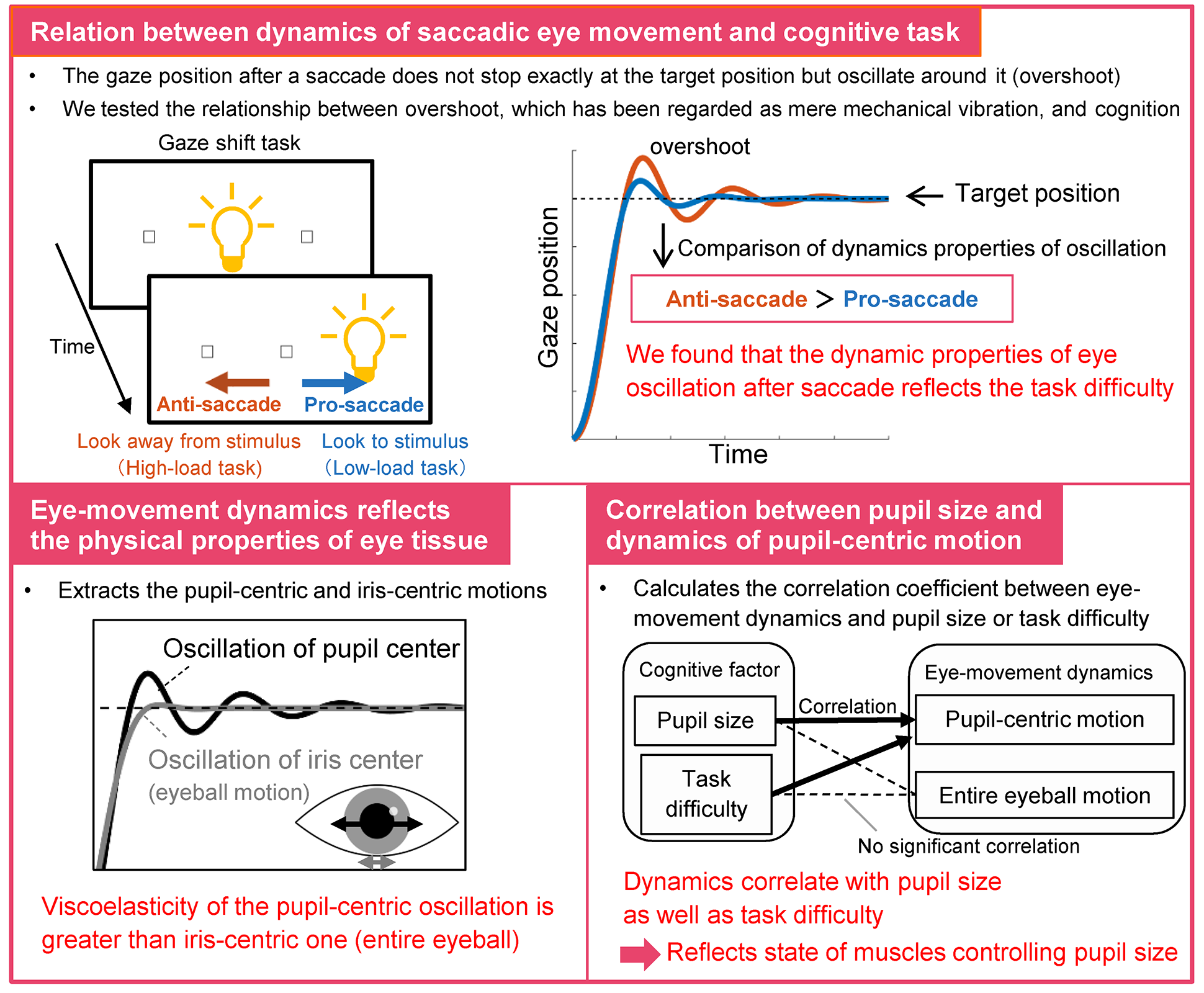Exhibition Program
Science of Human
24
Tiny eye movements reflect cognitive states
Relation of eye-movement dynamics with cognition and pupil
Abstract
Recent studies have shown that the characteristics of the eye movements reflect the cognitive state varying moment by moment. In this study, we investigated the relationship between cognitive states and the detailed dynamics of eye movements which have been regarded as mere mechanical oscillation. We found that the dynamic properties of eye oscillation after saccade reflect the task difficulty in gaze shift task. In addition, we showed that the oscillation dynamics was greater for pupil-centric motion than motion of entire eyeball. The correlation between the pupil-centric oscillation and pupil size indicates that it reflects the instantaneous states of eye tissue inside iris (e.g., stiffness of muscles controlling pupil size). There is a potential that the measurement of the tiny eye movements can be applied to a tool for monitoring the time-varying cognitive state (for example, monitoring the worker who engages in task requiring attention or cognitive load).
References
- S. Yamagishi, M. Yoneya, S. Furukawa, “Relationship of postsaccadic oscillation with the state of the pupil inside the iris and with cognitive processing,” J Neurophysiol, Vol. 123, pp. 484-495, 2020.
Poster
Contact
Shimpei Yamagishi / Sensory Resonance Research Group, Human Information Science Laboratory
Email:
Email:





